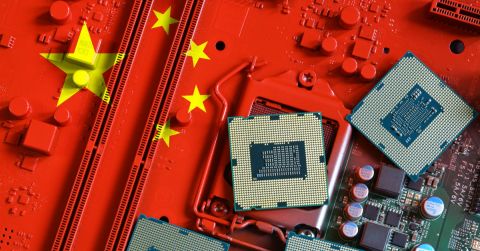AI-Driven Supply Chains: When Will it Hit Electronics?
Artificial intelligence (AI) has been and continues to be all the rage in robotics, social media, personalization, and other up-and-coming areas. It all runs quietly in the background thanks largely to the software community; the number of frameworks, libraries, example projects, and enterprise services is so broad it can be difficult to keep up. Now we have services like IBM Watson and AI Services on AWS that act as the underlying operating system for low-level AI applications.
The electronics industry is reasonably expecting AI to filter down to automotive, Industry 4.0, and robotics at the product level, but what about supply chain management? The truth is that AI is already being used in various forms in supply chain management, both within and outside of the electronics industry. Just like other industries, low-level AI-driven supply chain management applications can help your team be more productive and get the supply chain data you need quickly. Here’s what to watch if you’re in the business of procurement and how it will affect sourcing for electronic components.
What Do AI-Driven Supply Chains Look Like?
Much like other pieces of software, AI-driven supply chain applications use AI in the background. Software companies have become experts at making AI part of the experience, rather than a tool the user explicitly controls. It runs in the background of supply chain management applications and web platforms, and we certainly don’t have Skynet-level systems for supply chain management.
In short, if you have a computer or hardware system that predicts the outcome of a supply chain decision (say, a delivery route), watches the real outcome, and then adjusts itself so that the predictions align closer with reality, then you’re doing machine learning (ML). When these techniques are integrated into a larger rules-based strategy for decision-making, you now have a low-level form of artificial intelligence. AI-driven supply chains make use of these types of AI applications alongside other enterprise-level applications to gather data, process data, and make predictions related to sourcing and procurement.
These applications have become prominent in the following areas of ERP:
-
Demand forecasting: Just as its name suggests, ML models as part of AI systems are routinely used to predict local and regional demand. This is used as part of inventory management, logistics, and other tasks that depend on demand forecasts. Supply chain and procurement professionals have been using demand forecasting techniques since the early 2000s.
-
Logistics: This broad area used to be all about solving the traveling salesman problem. Today, AI applications are involved in planning route options based on observations and predictions of regional demand to create a more efficient flow of goods.
-
Supply chain visibility: True visibility requires processing huge amounts of data and displaying it for users in friendly formats. These data and processing results can also be used in other ML models as part of a broader AI system.
ML models used in all three areas can recognize trends that are not obvious to every human. The goal in applying AI to demand forecasting is to make supply chains more agile. If critical supply chain trends can be identified early, then producers, vendors, distributors, and even the end customer (e.g., PCB designers) can adjust their sourcing strategy accordingly.
Who’s Using AI for Sourcing?
In MHI.org’s 2020 Annual Report, results from a survey of 1,000 supply chain professionals reveal that 12% of respondents state their organizations are using AI in their management and procurement operations (effectively remaining flat since 2019). 60% of respondents expect they will be using these types of applications within the next 5 years, which reflects the technology-push aspect of specialized AI applications. Respondents work in industries ranging from transportation to manufacturing, as well as other areas.
Why is there a move to use applications for creating AI-driven supply chains? We can only speculate what happens in a given organization. However, the adoption of predictive analytics tools, which use machine learning techniques, is at 28% according to the MHI survey results. These tools are still low-level, meaning they require some interaction with a user group or integration with other asset tracking platforms to function effectively.
Some folks in the electronics industry get spooked when discussions around AI pop up. However, designers and procurement managers should likely not be concerned about these developments. These applications can’t provide the same value and insight as an experienced human. Instead, they are extremely useful tools for spotting the important trends that drive critical supply chain decisions. Whether recent volatility surrounding COVID-19 or lack of technical talent working in supply chain management, we can expect more companies to use these tools for sourcing and management.
What Do PCB Designers Need from AI-driven Supply Chains?
There is one group in particular that can benefit from ML-driven and AI-driven supply chain applications: electronics designers. This group needs supply chain visibility to select, track, and purchase components, both at small and large volumes.
Datasheets contain a huge amount of information, and individual designers don’t have time to keep track of supply chain data from every distributor. Designers need systems to help them get exactly the information they need when searching for components and craft their own sourcing strategy before production. With the right parts search engine, designers can take advantage of AI-driven filtration features for:
-
Finding components: A single component might fit into an application with many different names (e.g., voltage regulator, power converter, etc.). When looking for a specific type of component, AI-driven search features can be used to group and categorize similar components by application. This helps designers spot components they might need before they finalize their designs.
-
Filtering components: Most designers care more about specs than manufacturer or price, and no one should have to pore over datasheets to get down to a small number of technical specs. AI-driven analysis and filtration tools can extract the pertinent technical specs and quickly show them to a designer when sifting through large numbers of components.
This all relies on the aggregation of data from multiple distributors and AI-driven processing of data for users, allowing designers to make better decisions earlier in the design process. Larger electronics design companies, EMS services, and distributors can benefit by integrating these features into their own ERP systems. Ultimately, these tools will smooth out supply chain volatility and, hopefully, help companies anticipate and prevent component shortages.

Octopart is an active part of the AI-driven supply chain landscape and gives designers access to a range of supply chain data. When you use Octopart, you’ll have access to a search engine with advanced search and filtration features and access to parts data from worldwide distributors for free. If you’re a developer, you can get access to the Octopart API and build out your own AI-driven supply chain solutions. Take a look at our categories pages to start searching for the components you need.
Stay up-to-date with our latest articles by signing up for our newsletter.








